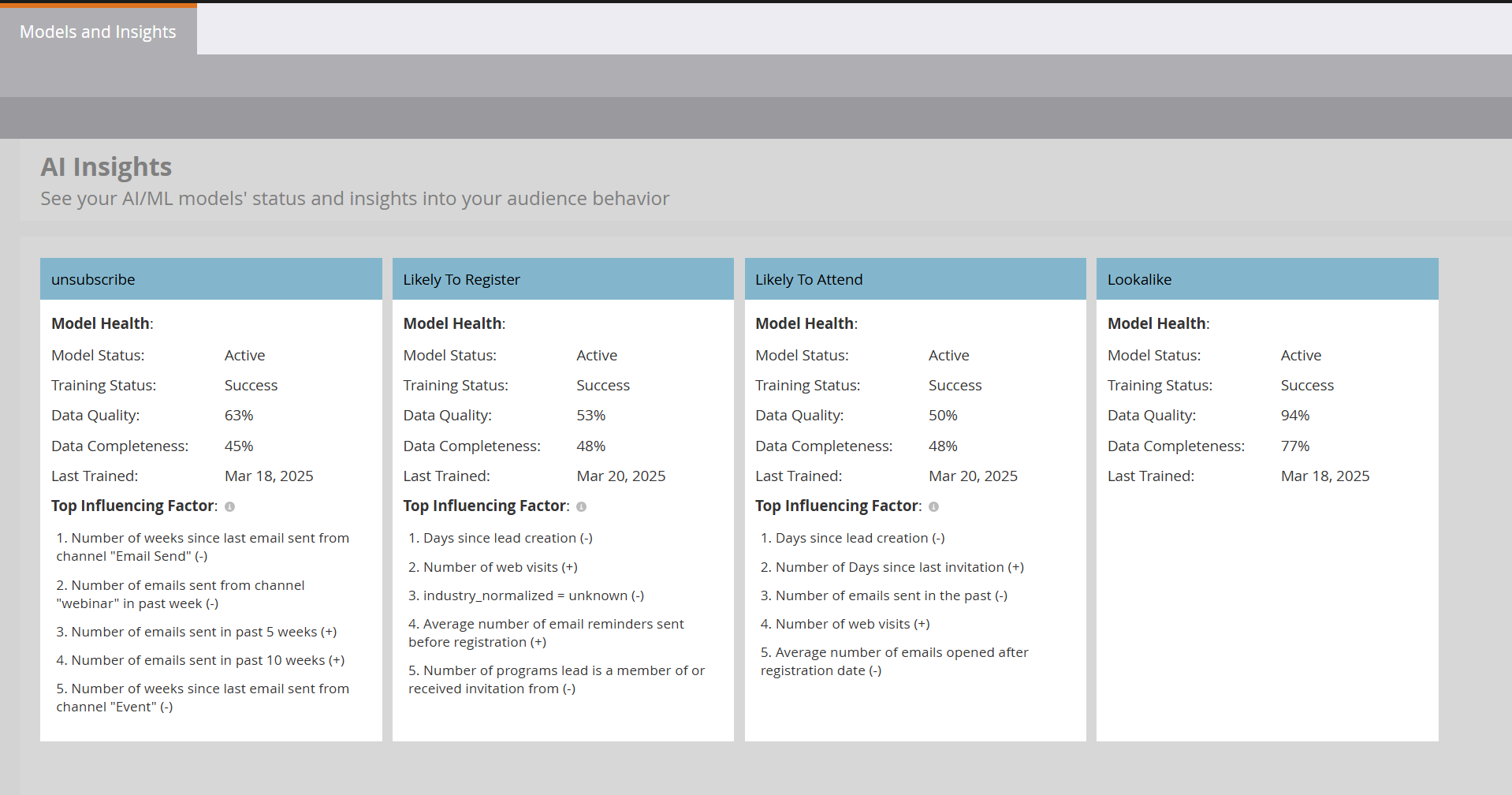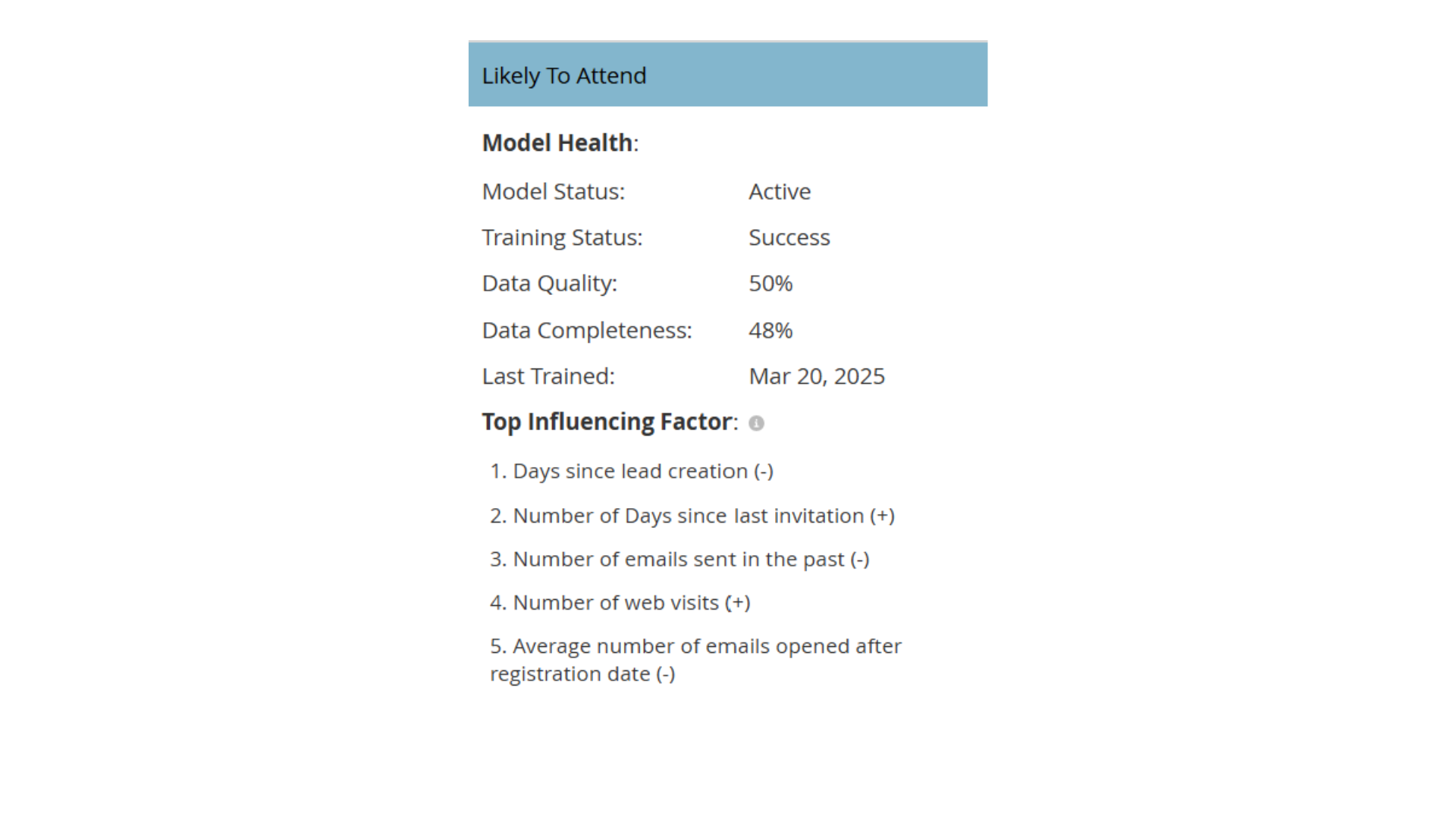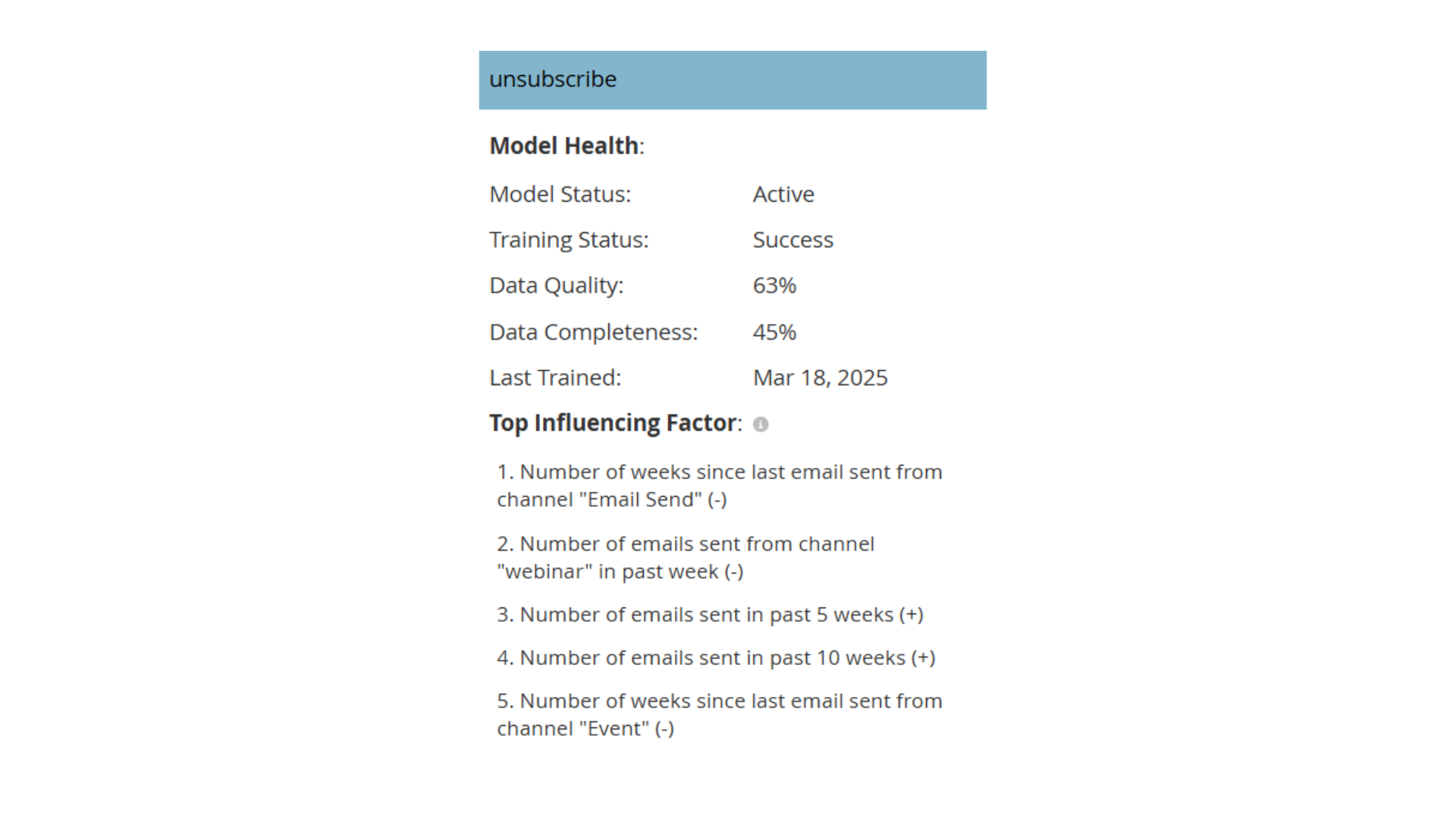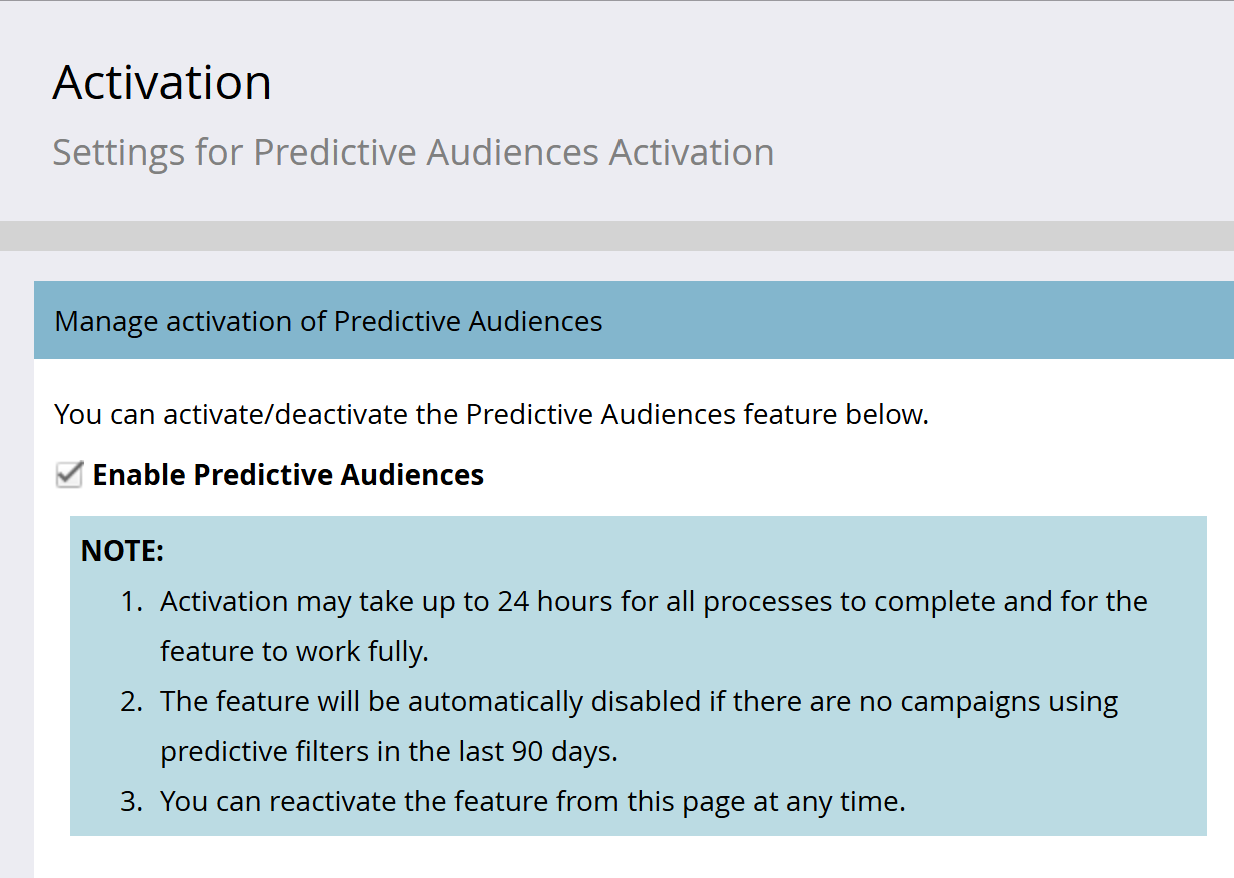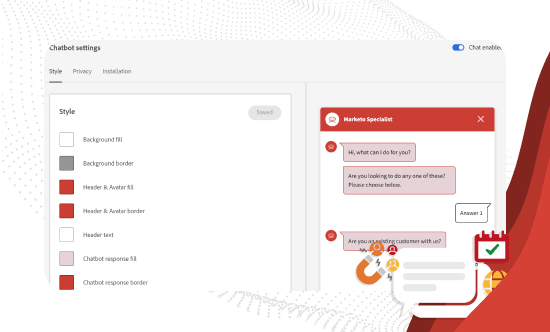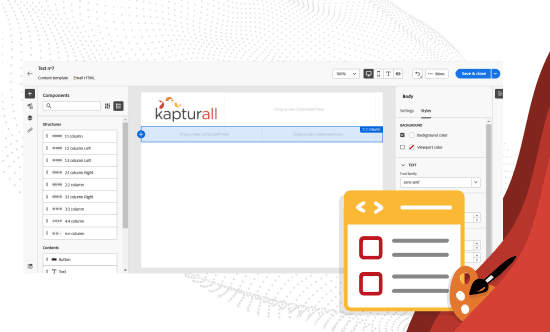Predictive Audiences in Marketo: Segment Your Campaigns with AI
Overview
Are you segmenting your database as if all your contacts share the same intent? What you don’t see could be directly affecting your results.
Marketo knows this, and that’s why it created Predictive Audiences — an AI-based feature that promises to change the way you decide who to target with your campaigns.
Does it really work? Here’s my experience.
- 1. What is Predictive Audiences in Marketo and how can it benefit your campaigns?
- 2. How Predictive Audiences works: filters, models, and data behind it
- 3. Activation and getting started: How to begin using Predictive Audiences
- 4. Predictive Audiences Filters: How to use them and what to expect
- 5. Predictive Audiences Filter Considerations
- 6. Real-world example: How a 90% audience reduction delivered the same results
- 7. Lookalike Audiences: Game-changing feature or overhyped?
- 8. Using predictions to protect your database and avoid opt-outs
- 9. Common mistakes when using Predictive Audiences (and how to avoid them)
- 10. Is Predictive Audiences for everyone? When to use it (and when not to
- 11. Conclusion: Fewer contacts, greater impact — The new smart marketing mindset
In marketing — especially B2B — every send counts. Over-emailing your database can cost you months of relationship-building with valuable leads. That’s where Predictive Audiences comes in: an AI-powered feature that helps you decide who should receive your campaigns… and who shouldn’t. Far from being just another segmentation tool, Predictive Audiences uses machine learning models to analyze contact behavior and predict key actions like registering, attending, or even unsubscribing. And while it may sound technical, it’s designed for any marketer who wants to: As the Marketing and Marketo lead at my company, this tool confirmed what I believed about campaigns: it’s not just about reaching more people, but about reaching them better. Predictive Audiences is based on predictive models that analyze multiple data points to deliver accurate forecasts. What kind of data? Everything from email opens and click history to website visits, past campaign responses, event attendance, and over 50 different signals. Marketo’s system processes this data and assigns a likelihood score to each contact for key actions like: • Likelihood to attend if registered The best part? These predictions don’t require complex setup. Everything runs in the background, and you simply apply predictive filters to your Smart Lists like any other condition. The result: a smart, automated, and data-driven way to optimize your targeting with zero extra effort. One of the nicest surprises when discovering Predictive Audiences was how easy it is to activate. Just go to your Marketo instance admin area, enable the feature, and you’ll have access to the new predictive filters directly in your Smart Lists. The technical part is simple. The challenge lies in the mindset: are you really ready to let AI decide who receives your next campaign? In my case, I started cautiously. I enabled the “Likelihood to Register” and “Likelihood to Attend” filters for a webinar campaign. What I saw raised an eyebrow: the audience size dropped by 90%. What used to be a 100% send became just 10%. I thought, “This can’t work.” But I decided to trust the process… and the outcome was eye-opening. Predictive Audiences currently includes five main filters that you can use as conditions in any Smart List: Likelihood to Register Note: Only works in event programs. Likelihood to Attend Note: Only works in event programs. In a recent campaign, I applied both filters and reduced my audience by 90%. The result? Almost the same number of registrations, but with a much higher conversion rate. It was a clear validation of how powerful AI can be when used correctly. Lookalike of Program Members Perfect for: Replicating high-performing audiences and expanding reach. Lookalike of Smart List Perfect for: Scaling Smart List audiences through lookalikes. Lookalike to Unsubscribe This filter has been a game changer for me. Being able to anticipate opt-outs helps protect my database and fine-tune strategies before losing a lead. Before diving into real-world use, keep these points in mind: We launched a campaign for a webinar targeting strategic customers. Normally, our mailing list would be large. This time, we applied the “Likelihood to Register” and “Likelihood to Attend” filters. Results: Most importantly: we got the same number of registrations, with less spam, less pressure on our database, and a new sense of control that, as a marketer, is priceless. This was a turning point — a clear demonstration that less can truly be more when done intelligently. One of the most exciting features was finding lookalikes of previous program members. The promise? If something worked before, find similar profiles to replicate success. Sounds great in theory, but reality was more nuanced. I used the filter to recreate a campaign that had worked brilliantly a few months earlier, expecting similar results… but it didn’t perform as well. This led me to a key conclusion: Predictive Audiences doesn’t replace your judgment — it complements it. Predictive models don’t account for context variables like: My advice? Use it as guidance, not autopilot. In B2B, an unsubscribe is almost a lost lead. Mass, poorly segmented or overly frequent campaigns can wear out your database. This is where the unsubscribe likelihood filter comes in. It analyzes dozens of signals to anticipate who’s about to say “no more.” And it goes beyond just opens or clicks — it looks at overall engagement, web behavior, campaign history, and more. What I do now: With this, I’ve kept opt-out rates low and improved database trust. Even though the tool is powerful, missteps are easy if used without a clear strategy: Mistake 1: Using every filter without a clear goal Mistake 2: Ignoring context Mistake 3: Believing Predictive Audiences is magic Mistake 4: Not measuring outcomes When it makes sense: When to be cautious: Marketing has evolved. It’s no longer about “reaching everyone,” but about reaching the right people. With Predictive Audiences, Marketo empowers you to use AI not to complicate things, but to simplify decision-making — to help you segment smarter, protect your database, improve conversions, and most importantly, do more with less. I’ve already tried it. I went from sending to thousands, to sending to hundreds… and got the same impact. Are you ready to try it too?What is Predictive Audiences in Marketo and how can it benefit your campaigns?
• Increase conversions without raising send volume
• Send fewer emails, but with greater impact
• Protect their database from unnecessary fatigue
How Predictive Audiences works: filters, models, and data behind it
• Likelihood to register for an event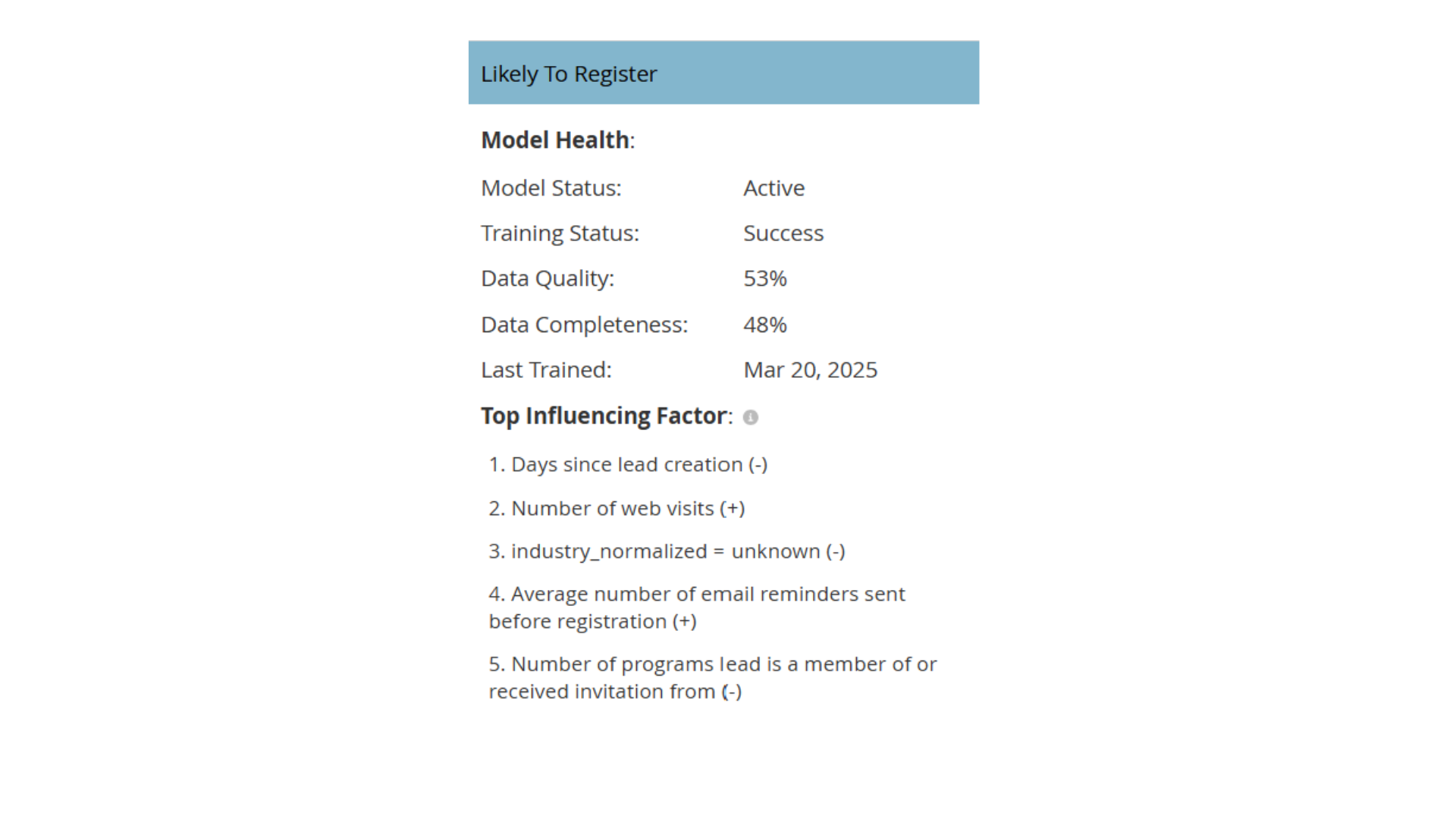
• Similarity to members of another program (lookalikes)
Activation and getting started: How to begin using Predictive Audiences
Predictive Audiences Filters: How to use them and what to expect
Predicts which contacts are most likely to register for an event or complete a form. In the admin section you can see the reliability and variables used by Adobe Sensei in this filter in the Models ans Insights section under Likelihood to register.
Admin section shows model accuracy and variables used by Adobe Sensei under “Models and Insights > Likelihood to Register.”
Estimates the probability that a contact will actually attend an event they were invited to or registered for. In the admin part you can see the reliability and the variables used by Adobe Sensei in this filter in the Models ans Insights part under Likelihood to attend.
Accuracy and variables are visible under “Models and Insights > Likelihood to Attend.”
This filter looks for contacts similar to those who have successfully participated in previous campaigns. In the admin part you can see the reliability and variables used by Adobe Sensei in this filter in the Models ans Insights part of Lookalike.
Model reliability and variables can be reviewed in “Models and Insights > Lookalike.”
This filter looks for contacts similar to those that have similar traits to a smar list you have created in Market. In the admin part you can see the reliability and variables used by Adobe Sensei in this filter in the Models ans Insights part of Lookalike.
Variables and accuracy also found in “Models and Insights > Lookalike.”
Predicts which contacts are most likely to unsubscribe after another communication.
Tips for using this filter:
• Identify potential “dropouts” and understand why
• Reduce frequency for high-risk profiles
• Use as an exclusion filter in high-impact campaigns
Predictive Audiences Filter Considerations
• You can use them in existing campaigns: No problem if the program was created before activating Predictive Audiences. Filters can be added later.
• Not compatible with triggered campaigns: Filters only work in batch campaigns. They can’t be used in trigger-based flows.
• You can’t clone or move campaigns using these filters: If a campaign uses predictive filters, it can’t be cloned or moved. You’ll need to create a new one.
• Max 5 filters per campaign: A Smart List can use up to five predictive filters.
• If something fails, the campaign stops automatically: Marketo halts the send and sends an alert if it detects any filter errors.
• Size limits: Campaigns using these filters can evaluate up to 1 million people, with a max of 50 active programs using Predictive Audiences at the same time.
Real-world example: How a 90% audience reduction delivered the same results
• The audience dropped by 90%
• Open and conversion rates increased
Lookalike Audiences: Game-changing feature or overhyped?
• Offer changes
• Audience fatigue
• Campaign timing
Using predictions to protect your database and avoid opt-outs
• Exclude those contacts from aggressive promotional campaigns
• Increase personalization when they are included
• Reduce frequency for “fatigued” profiles
• Create a Smart List to pause notifications for “critical” contacts
Common mistakes when using Predictive Audiences (and how to avoid them)
→ Only apply those aligned with your campaign objectives. Less is more.
→ Not all campaigns are the same. A technical event isn’t segmented like a commercial one.
→ Models need data. If your database is weak, your results will be too.
→ Test, measure, and iterate. The models learn, but so should you.
Is Predictive Audiences for everyone? When to use it (and when not to
• You have a large database
• You run recurring campaigns and need to prioritize
• You want to reduce spam and increase engagement
• You expect results without testing or measuring
• Your database is small or inactive
• You’re looking for plug-and-play solutions with no customization
Conclusion: Fewer contacts, greater impact — The new smart marketing mindset
SIGN UP FOR OUR NEWSLETTER
Eduardo Baquedano
Senior Marketing Consultant in Kapturall
Eduardo kicked off his career in sustainable mobility at SEAT before pivoting to become a marketing automation consultant, earning X2 Marketo Certification along the way. He now heads Marketing at Kapturall, where he's broadened his expertise in Marketing and Sales. Beyond work, his passion for climbing mirrors his love for challenges, showcasing his relentless pursuit of personal and professional growth.
